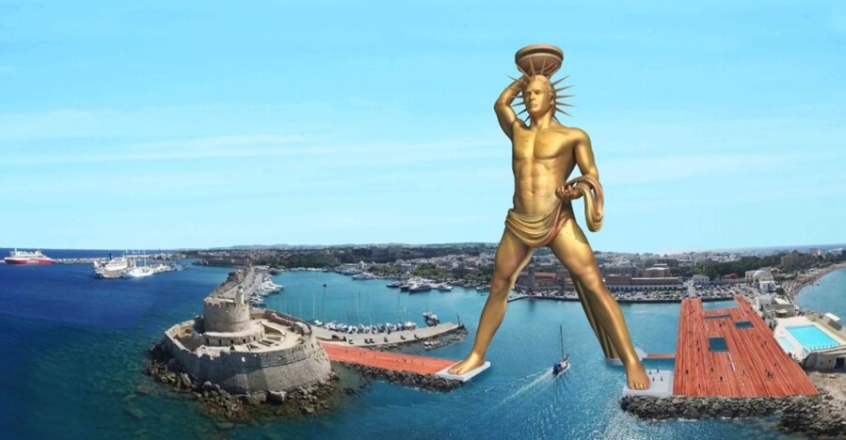
Are European architects inadvertently reviving the ancient worship of Greek gods?
A group of architects from Europe is planning to rebuild the Colossus of Rhodes, a gigantic monument erected in the 3rd century B.C to pay tribute to the Greek god of the sun, Helios.
This huge undertaking, estimated to cost $283 million, involves the construction on the island of Rhodes of a 500-feet tall statue depicting the Greek deity, which will also serve as a lighthouse, a library, an exhibition hall and a cultural centre.
The original Colossus of Rhodes, considered as one of the Seven Wonders of the Ancient World, only stood 100-feet tall. It was constructed in 280 B.C. after the Greek military successfully defended the island of Rhodes from forces sent by a leader from Cyprus, Antigonus I Monophthalmus.
The enormous pagan statue, one of the tallest statues on Earth at that time, came crumbling down after a powerful earthquake in 226 B.C.
To prevent the new Colossus of Rhodes from suffering the same fate as its predecessor, the project's engineering team is planning to use "intelligent systems to prevent the consequences of earthquakes and wind forces."
This will be done by designing the enormous monument like a tripod, with three foundations touching the ground. Aside from the pagan deity's two legs, a third support from the sash draped over the titan's arm and touching the ground will also be built.
In addition to these, a heavy steel support will be placed around the structure's base to serve as a counterbalance. The statue can also rock back and forth through the use of a suspension system.
Solar panels will likewise be used to cover the monument's exterior so that renewable energy can power it.
The people behind the project said they only have one mission, according to Popular Mechanics: to help boost Greece's tourism and put the island of Rhodes back on the map after the country experienced an economic crisis last year.














